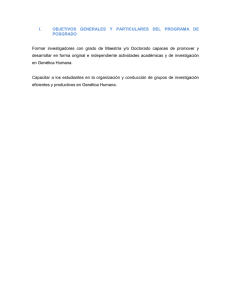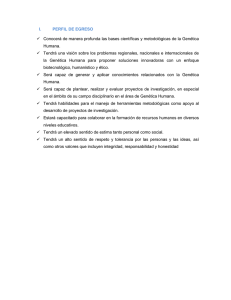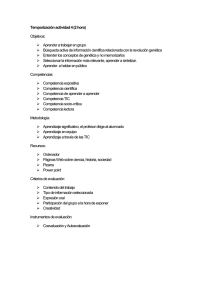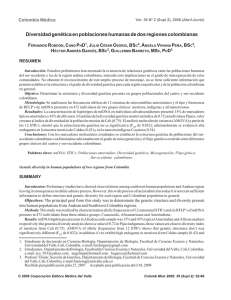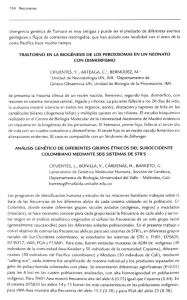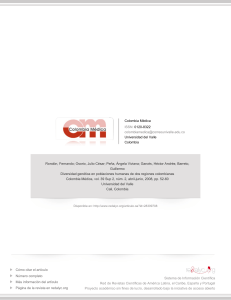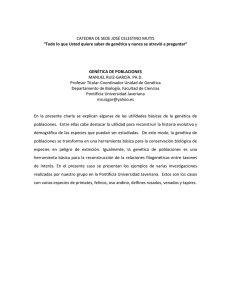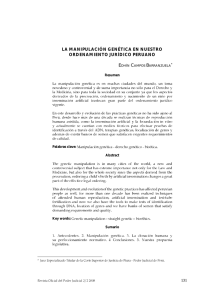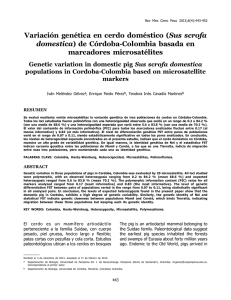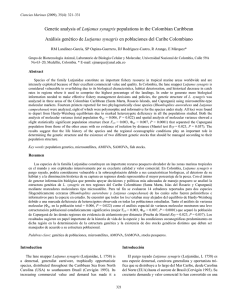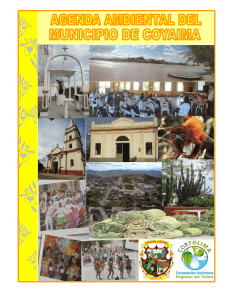lo de genetica para imprimir correcciones conde.p65
Anuncio
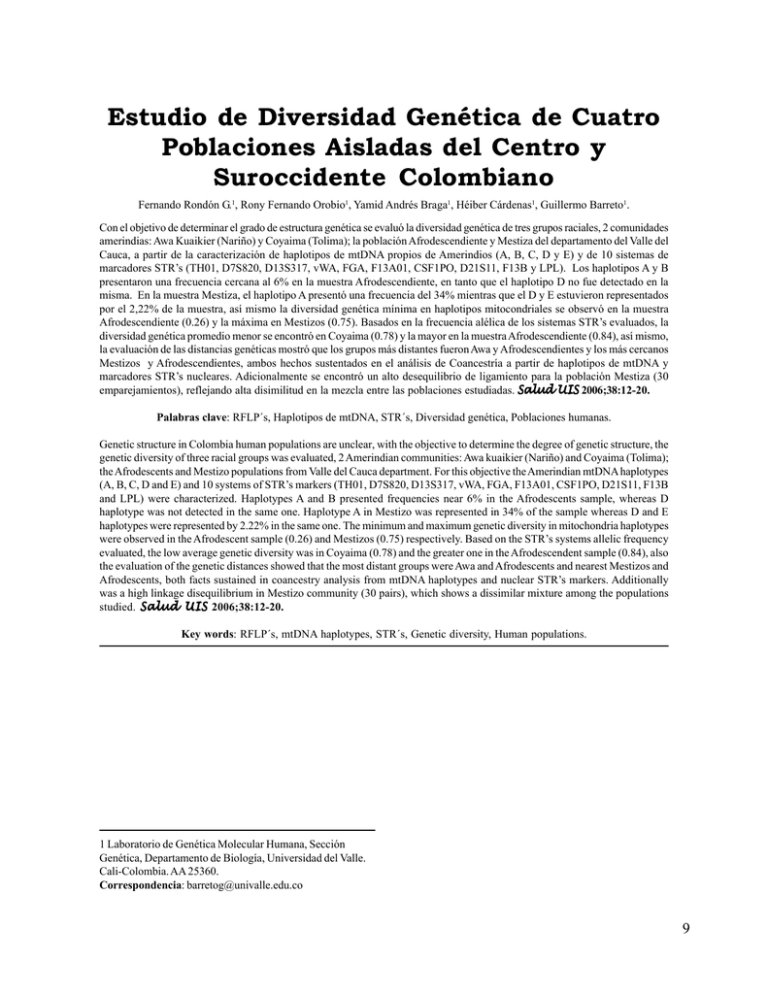
Salud UIS Estudio de Diversidad Genética de Cuatro Poblaciones Aisladas del Centro y Suroccidente Colombiano Fernando Rondón G.1, Rony Fernando Orobio1, Yamid Andrés Braga1, Héiber Cárdenas1, Guillermo Barreto1. Con el objetivo de determinar el grado de estructura genética se evaluó la diversidad genética de tres grupos raciales, 2 comunidades amerindias: Awa Kuaikier (Nariño) y Coyaima (Tolima); la población Afrodescendiente y Mestiza del departamento del Valle del Cauca, a partir de la caracterización de haplotipos de mtDNA propios de Amerindios (A, B, C, D y E) y de 10 sistemas de marcadores STR’s (TH01, D7S820, D13S317, vWA, FGA, F13A01, CSF1PO, D21S11, F13B y LPL). Los haplotipos A y B presentaron una frecuencia cercana al 6% en la muestra Afrodescendiente, en tanto que el haplotipo D no fue detectado en la misma. En la muestra Mestiza, el haplotipo A presentó una frecuencia del 34% mientras que el D y E estuvieron representados por el 2,22% de la muestra, así mismo la diversidad genética mínima en haplotipos mitocondriales se observó en la muestra Afrodescendiente (0.26) y la máxima en Mestizos (0.75). Basados en la frecuencia alélica de los sistemas STR’s evaluados, la diversidad genética promedio menor se encontró en Coyaima (0.78) y la mayor en la muestra Afrodescendiente (0.84), así mismo, la evaluación de las distancias genéticas mostró que los grupos más distantes fueron Awa y Afrodescendientes y los más cercanos Mestizos y Afrodescendientes, ambos hechos sustentados en el análisis de Coancestría a partir de haplotipos de mtDNA y marcadores STR’s nucleares. Adicionalmente se encontró un alto desequilibrio de ligamiento para la población Mestiza (30 emparejamientos), reflejando alta disimilitud en la mezcla entre las poblaciones estudiadas. Salud UIS 2006;38:12-20. Palabras clave: RFLP´s, Haplotipos de mtDNA, STR´s, Diversidad genética, Poblaciones humanas. Genetic structure in Colombia human populations are unclear, with the objective to determine the degree of genetic structure, the genetic diversity of three racial groups was evaluated, 2 Amerindian communities: Awa kuaikier (Nariño) and Coyaima (Tolima); the Afrodescents and Mestizo populations from Valle del Cauca department. For this objective the Amerindian mtDNA haplotypes (A, B, C, D and E) and 10 systems of STR’s markers (TH01, D7S820, D13S317, vWA, FGA, F13A01, CSF1PO, D21S11, F13B and LPL) were characterized. Haplotypes A and B presented frequencies near 6% in the Afrodescents sample, whereas D haplotype was not detected in the same one. Haplotype A in Mestizo was represented in 34% of the sample whereas D and E haplotypes were represented by 2.22% in the same one. The minimum and maximum genetic diversity in mitochondria haplotypes were observed in the Afrodescent sample (0.26) and Mestizos (0.75) respectively. Based on the STR’s systems allelic frequency evaluated, the low average genetic diversity was in Coyaima (0.78) and the greater one in the Afrodescendent sample (0.84), also the evaluation of the genetic distances showed that the most distant groups were Awa and Afrodescents and nearest Mestizos and Afrodescents, both facts sustained in coancestry analysis from mtDNA haplotypes and nuclear STR’s markers. Additionally was a high linkage disequilibrium in Mestizo community (30 pairs), which shows a dissimilar mixture among the populations studied. Salud UIS 2006;38:12-20. Key words: RFLP´s, mtDNA haplotypes, STR´s, Genetic diversity, Human populations. 1 Laboratorio de Genética Molecular Humana, Sección Genética, Departamento de Biología, Universidad del Valle. Cali-Colombia. AA 25360. Correspondencia: [email protected] 9
